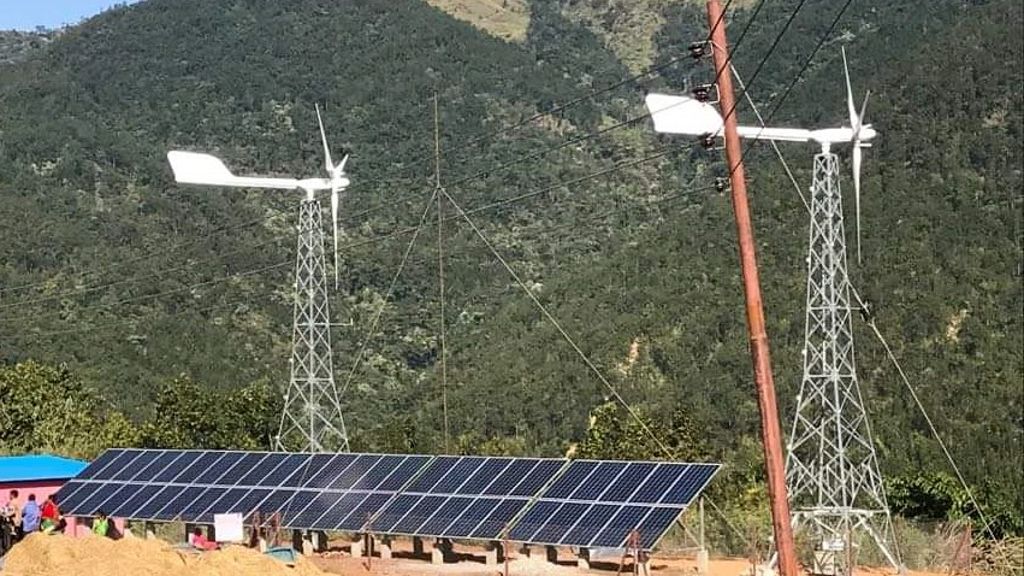Nepal’s Alternative Energy Promotion Center (AEPC) has launched three tenders to resume its demanding path towards renewable energy development, and to address chronic energy shortages, especially in rural areas.
In a first tender, the AEPC announced it is seeking consultants for a feasibility study for four hybrid wind/solar projects planned for the municipalities of Tila, in Jumla district; Tripurasundari in Dolpa; Rajpur in Dang Deokhuri district; and Soru, in Mugu. Consultants have until Thursday to submit proposals.
The projects will be developed on the model of the hybrid wind/solar plant the AEPC has implemented in rural Nepal with the support of the Asian Development Bank. The plant, commissioned in December 2017, is powering 83 rural households in Hariharpur Gadhi village, in the Sindhuli district. That cost $16.2 million and was part financed by the government of Nepal, the Climate Investment Fund’s Scaling up Of Renewable Energy Program and the local community.
In a second tender in late December, the AEPC announced it is seeking consultants for the implementation of hydro mini-grid systems totaling 3.4 MW capacity and solar/wind mini-grids with a combined 500 kW capacity, under the National Rural and Renewable Energy Program.
Subsidy program
A third tender issued by the AEPC, for which the deadline is also on Thursday, is aimed at selecting consultants for a study of standardizing maximum retail prices for renewable energy technologies. “[The] government of Nepal has approved [a] subsidy policy and subsidy delivery mechanism for implementation of [a] subsidy program,” said the AEPC in the tender document. “[To] assure the quality and best services to end users, it is necessary to standardize the prices of the household technologies.”
Through the subsidy policy, the government wants to support residential and institutional PV; solar driers, cookers and irrigation systems; biogas units, metallic improved cooking stoves; rocket stoves and metallic gasifiers; and improved water mills.
Nepal has around 1 GW of installed power generation capacity – almost all of which is hydropower – and only 65% of the country’s population has access to electricity. The International Renewable Energy Agency estimates Nepal has the potential for 2.1 GW of PV capacity. To date, however, there is only one large-scale PV project under construction, the 25 MW project at Devighat Hydropower Station, in Nuwakot.
This content is protected by copyright and may not be reused. If you want to cooperate with us and would like to reuse some of our content, please contact: editors@pv-magazine.com.




By submitting this form you agree to pv magazine using your data for the purposes of publishing your comment.
Your personal data will only be disclosed or otherwise transmitted to third parties for the purposes of spam filtering or if this is necessary for technical maintenance of the website. Any other transfer to third parties will not take place unless this is justified on the basis of applicable data protection regulations or if pv magazine is legally obliged to do so.
You may revoke this consent at any time with effect for the future, in which case your personal data will be deleted immediately. Otherwise, your data will be deleted if pv magazine has processed your request or the purpose of data storage is fulfilled.
Further information on data privacy can be found in our Data Protection Policy.